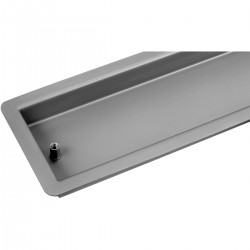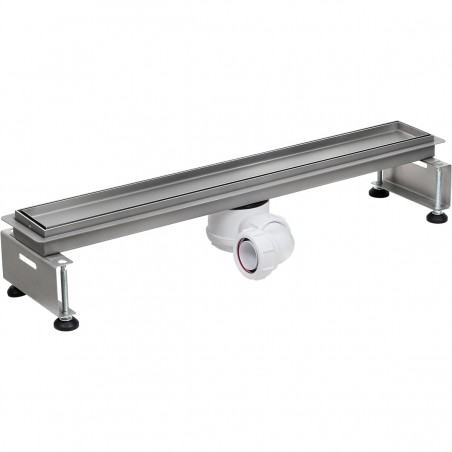

#LINEAR OVERFLOW DRAIN INSTALL#
Some contractors can install such a system for an existing pool, but it will cost a significant sum. This elaborate system is efficient at keeping your swimming pool from overflowing, but it typically has to be installed during the construction of a pool. The tank’s filtration system will then process the water to get rid of debris and bacteria before it is pumped back into the pool when necessary. If your swimming pool is one of those designed with a filtration tank that can hold and recycle excess water, the pool overflow will go to the tank. The design of the pit ensures it is deep enough to hold chlorinated water without harming the plant life around it. The pipes from the drain are hidden away from sight and channeled into the drainage pit-which is typically up to 3 ft (0.91 m) deep and wide. The pool overflow can also go to drainage pits constructed to hold excess water in the garden. If you live in an area where storms are commonplace, excess water can cause your septic tanks to fill up faster than normal. However, it’s not always the most efficient. The design of your overflow drain may channel water into your drainage system, which keeps excess water away from the surface. If you have a pool overflow drain, the water collected goes to any of the following destinations: Drainage System Possible Destinations for a Pool Overflow Drain The rest of the article will cover all the possible options. Knowing the destination of your pool overflow can help you avert problems in the future. The overflow destination is typically discussed during design. Some pool designers also set up the overflow to act as a quasi-irrigation system for a home’s garden or lawns. To be sure of the issue, contact a reputable plumber, like ARS Rescue Rooter, to diagnose the issue.A pool overflow can go into the drainage system, a reservoir within the property, or a tank for processing and reuse. Inadequately sized drainpipes and kinked hoses can also cause an overflow. Note: Be prepared to stop the washing machine cycle once you spot a leak.Ĭlogs aren’t always the culprit when it comes to an overflowing drainpipe. Contact a licensed plumber to inspect your home’s sewage lines and identify the issue. More than a minute-Water that takes more than a minute to overflow after entering the drainage pipe may mean a more severe blockage in the plumbing system.If you can’t reach the clog with your snake, contact a plumber to assess the proper course of action.

#LINEAR OVERFLOW DRAIN FREE#
This may require a long drain-snake to reach deep into the pipe and free the clog. 30 seconds to a minute-If the stoppage doesn’t cause the water to surface for 30 seconds or more, the clog may be deeper in the drainpipe system.If the clog is small, you may be able to clear it with a hand-operated snake. A few seconds-If the pipe fills up and overflows within seconds, the clog is most likely located near the standpipe’s surface or in a washing machine hose.The amount of time it takes for the standpipe to fill up and overflow helps you diagnose where the clog is located. If you see water back up and out of the standpipe, your washer’s drain is most likely the issue. Observe the washing machine as it pumps water into the hoses and up into the standpipe. Start by running your washer through a drain cycle. Some advanced washing machines have signal errors that identify the cause of a leak, but for most washing machines, you’ll need to run a diagnostic test. First, you will need to confirm that your washer’s drain line is the issue.


 0 kommentar(er)
0 kommentar(er)
